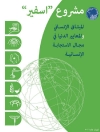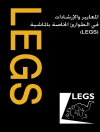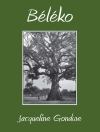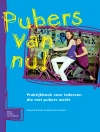This book focuses on the concept of ‘home’ or ‘place of origin’ (expressed in Tamil as ‘
Ur’) and its various dimensions, in turn related to issues of belonging, attachment, detachment, and commonality among the war-affected population in the post-war era of Sri Lanka. Little research has been undertaken on displacement and forced migration since the end of the war, and so this book provides new insight into the intersections between externally and internally displaced people and notions of home in relation to gender, age, caste and class. It excavates the roots of the problem of not being able to return due to combinations of uncertainty, unemployment, and the loss of people and property. The author shows that notions of ‘home’ vary considerably depending on multiple variables, and this is particularly pronounced between the different generations. The book also confronts how the migration from Sri Lanka over the border to India has brought on discernible changes to the lives ofwomen in particular, in transforming their identities in multiple re-invented cultural manifestations, and cultivating a new kind of attachment towards their new homes. Interdisciplinary in tenor, this book will be of interest to scholars in development studies with a focus on South Asia, as well as graduate students and researchers in the fields of migration, conflict studies, Sri Lanka studies, and sociology. It may also have an impact on policymakers owing to its comprehensive, empirically-based analysis of the consequences of the Sri Lankan civil war for Tamils.
Tabla de materias
Acknowledgment.-Chapter 1: Search for Home: An Introduction.-1.1Displacement, Home, and Belonging: the Sri Lankan context.- Displacement in the island: causes and outcomes.- Conceptualizing “Home”: a review.- Researching Home: Displaced persons worldwide.- Ur as the native village.- Belonging and its different forms.- Conceptualizing Attachment as a theoretical framework.- 1.2 Research Methodology.- Access to the field.- Documentation of research and methods.- Ethical considerations in the field.- 1.3 Structure of the book.- Chapter 2: Migration Research in the island: An overview of internal and international displacement.- 2.1 Historical development: civil war and migration in the island.- The war: an analysis.- 2.2 Sri Lankan Tamils and migration: an overview.- Migration causes to migration outcomes: Island-wide misery or contentment?.- Migration to Tamil Nadu: Life as a refugee in India.- Migrating to Australia: a better life?.- 2.3 Post-war scenario: Impact of the war.- Jaffna, a Tamil homeland: The IDPs at peace?.- Reconstruction and Development: role of governmental and non-governmental agencies.- 2.4 Conclusion.- Chapter 3: Shifting notions of Ur/home: narratives from Sri Lanka.- 3.1 Shifting meanings of Ur: different tales to tell.- Time, socio-economic needs and aspirations to the good life.- Father versus son: conceptualizing Ur from two different age groups.- The idea of home changed with time: Shaliny’s story.- Ur as a prison: Padmini’s accounts.- Ur as a source of income: regaining lost status.- 3.2 Concluding remarks.- Chapter 4: Home or Ur: Changing meanings for the refugees in Tamil Nadu, India.- 4.1 Ur in Sri Lanka and home in India: Elderly refugees’ narratives on home.- 4.2 Ur as a strange place: the changed idea of home among the others.- 4.3 Concluding remarks.- Chapter 5: Attachment, detachment or both: voices of the displaced.- 5.1 Attachment to Ur: (actual) return to get related with memories and people.- 5.2 Attachment to Ur: (actual) return to get connected with broken memories.- 5.3 Attachment to Ur: nostalgia and ambivalence.- 5.4 From attachment to detachment.- 5.5 Detachment/ non-attachment.- Attachment and its contrasting images.- 5.6 Concluding remarks.- Chapter 6: The Tamil Ur.- 6.1 Discussing Ur.- 6.2 ‘Home’ versus ‘Ur’.- 6.3 Relating the two concepts: ‘Ur’ and ‘Attachment’.- Chapter 7: Conclusion: an outlook.- 7.1 Home and Attachment: the varied meanings.- 7.3 Post-war development: ideas and visions.- 7.4 On the road to recovery: Tamil diaspora as investors.- 7.5 What the future holds: Fate of the displaced persons.- Bibliography.- Appendix.
Sobre el autor
Diotima Chattoraj is currently working as a research assistant with the Saw Swee Hock School of Public Health at NUS, in collaboration with NTU and SMU. From September 2018 until August 2020, she worked at the Faculty of Social Sciences (FASS) in Universiti Brunei Darussalam as a researcher, where she was involved in several research projects on skill-mobility in Asia, the Rohingyas, security and migration, gender and migration, the Uyghurs and their homelands, and also on the recent topic of Covid-19 and migration. She completed her Ph D at Ruhr University Bochum, Germany, where she researched the different kinds of attachments that displaced Sri Lankan Tamils have to their places of origin in the post-war era. Her research interests include migration, development, ethnicity, international relations, and boundary-making. Her academic background is supported by a strong publication record including several articles, book chapters and book reviews in refereed, Scopus-indexedjournals. She is an assistant editor for South Asia Research (Sage) and serves as a peer reviewer for a number of refereed journals. She has volunteered with several non-profit organizations including UNICEF in the US, UNWOMEN Singapore, Here With You Migrants Helpline, and the Singapore Red Cross Society.












